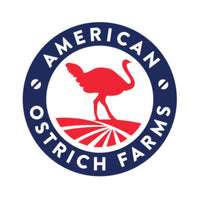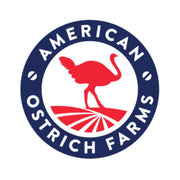Once a staple in kitchens around the world, organ meats—also known as offal—are making a quiet but powerful comeback. What was once considered old-fashioned is now gaining new ground among health enthusiasts, sustainable shoppers, and chefs looking for big flavor and minimal waste. And right at the forefront of this offal revival? Ostrich.
At American Ostrich Farms, we believe that every part of the animal matters. That’s why we’re proud to offer premium cuts like ostrich liver and heart—nutrient-dense, easy to cook, and surprisingly delicious. In this post, we’ll explore what makes these organ meats worth a second look and how they can help us build a healthier, more responsible food system.
THE UNDERRATED OFFAL
NUTRITION IN ITS PUREST FORM
If you’re chasing nutrient density, it’s hard to beat liver and heart. Ostrich liver is especially rich in heme iron, vitamin A, and B12—critical nutrients for energy, immunity, and brain health. Ostrich heart is no slouch either, delivering high levels of CoQ10, zinc, selenium, and lean protein, all essential for cardiovascular function and muscle recovery.
What sets ostrich apart from other red meat offal? It’s naturally lower in fat and cholesterol, while still packing in the same (or better) levels of key vitamins and minerals. And since American Ostrich Farms doesn’t use hormones, antibiotics, or steroids, you’re getting clean nutrition from a clean source.
SURPRISINGLY DELICIOUS
Let’s bust a myth: offal doesn’t have to taste… off. When handled and cooked properly, organ meats are rich, complex, and satisfying. Ostrich liver, in particular, has a cleaner, milder flavor than beef or chicken liver, with a velvety texture that lends itself beautifully to pan-searing, pâtés, or even liver mousse. Ostrich heart is lean and meaty—perfect for grilling, stewing, or slicing thin for a bold and satisfying sandwich.
For curious home cooks, organ meats offer an easy way to stretch your culinary muscles. For chefs, they’re a chance to add depth and novelty to the menu without sacrificing quality or ethics.
CHALLENGES (AND OPPORTUNITIES) IN OFFAL
WASTE NOT, WANT NOT
Using the whole animal isn’t just responsible—it’s respectful. It honors the resources, time, and care that go into raising livestock. But let’s be honest: most organ meats still face a perception problem. Many consumers have never tried them. Others aren’t sure how to cook them. As a result, perfectly good liver and heart often go to waste.
Ostrich farmers feel this disconnect acutely. These birds yield pristine, nutrient-rich organs—but unless there’s demand, they remain underutilized. By building awareness, offering easy recipes, and sharing the health benefits, we can transform offal from a forgotten byproduct into a premium offering.
SUPPLY CHAIN SLOWDOWNS
Unlike steaks or burger patties, organ meats don’t move fast unless you educate consumers. They’re also more perishable and require different handling, packaging, and marketing strategies.
That’s where small-scale, value-driven processors like Sustainable Meats come in. When liver and heart are handled with care—from the slaughter floor to the shelf—they become powerful value-adds for butchers, pet food companies, and adventurous eaters alike. And when chefs and home cooks discover how easy and delicious ostrich offal can be? That’s a win for everyone—from ranchers to retailers.
A RETURN TO ROOTS—AND A STEP TOWARD THE FUTURE
Eating offal isn’t a step backward—it’s a smarter way forward. It’s about maximizing what we raise, nourishing our bodies with foods nature intended, and building a food system that respects animals and eaters alike.
At American Ostrich Farms, we believe that liver and heart deserve a spot on every plate—not just for tradition’s sake, but because they truly deliver. They’re nutrient-packed, surprisingly mild in flavor, and simple to cook.
So whether you’re a seasoned offal lover or just offal-curious, now’s the time to dig in. Try our pasture-raised ostrich liver and heart—and discover what you’ve been missing.






